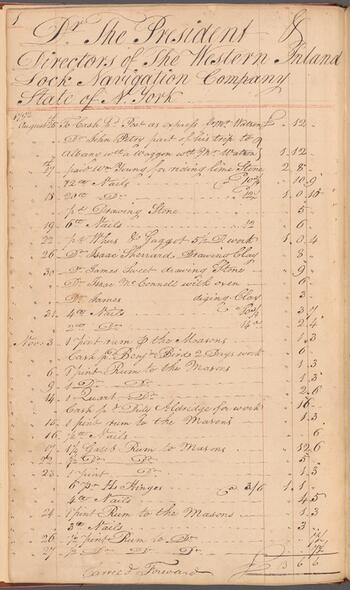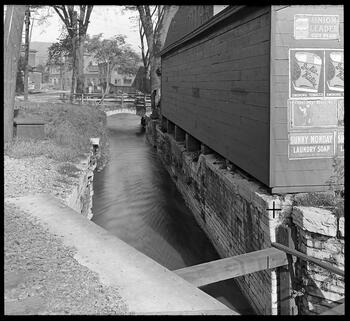Two Inland Lock Navigation Companies, Western and Northern, were chartered by the New York State Legislature in 1792, moving the Erie Canal project closer to becoming reality. Their goal was to open up westward inland transportation routes to the Great Lakes from Schenectady, and particularly to improve transportation for agricultural products from central and upstate New York.
The Western Inland Lock Navigation Company, led by political leader Philip Schuyler, focused on making the Mohawk River more navigable by clearing the riverbed and building a small canal and lock system to bypass the Mohawk River’s falls and rapids.
In a 1796 report to the New York legislature, the directors of the lock navigation companies reported on the progress of their canal construction along the Mohawk River and predicted the impact of continued canal-building for the state:
The Legislature will permit us respectfully to observe, that should assistance be afforded in either shape, the prospect of a speedy reduction of the price of transportation, would doubtless greatly enhance the value of the property of the people of this state, bordering on the western waters, and recently purchased from the natives, and still unsold.
Unfortunately, both companies had great difficulty in getting either government or public support for financing and constructing a canal route of any substance.
The Western Inland Lock Navigation Company was established by former American Revolutionary War hero Philip Schuyler, who saw that the network of inland waterways used for military purposes during the war could be used for commercial growth as well. This account book from the company shows expenses associated with its work. Courtesy of The New York Public Library.
This photograph shows a stone lock on the Mohawk River built about 1800 by the Western Inland Lock Navigation Company in Little Falls, Herkimer County, New York. The Western Inland Lock Navigation Company originally constructed locks from timber but, in 1803, began replacing the leaking locks with stone from local quarries. Courtesy of New York State Archives via Empire State Digital Network.

